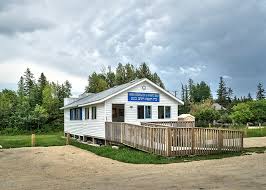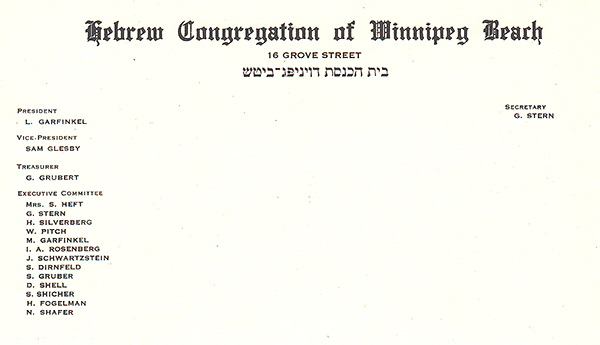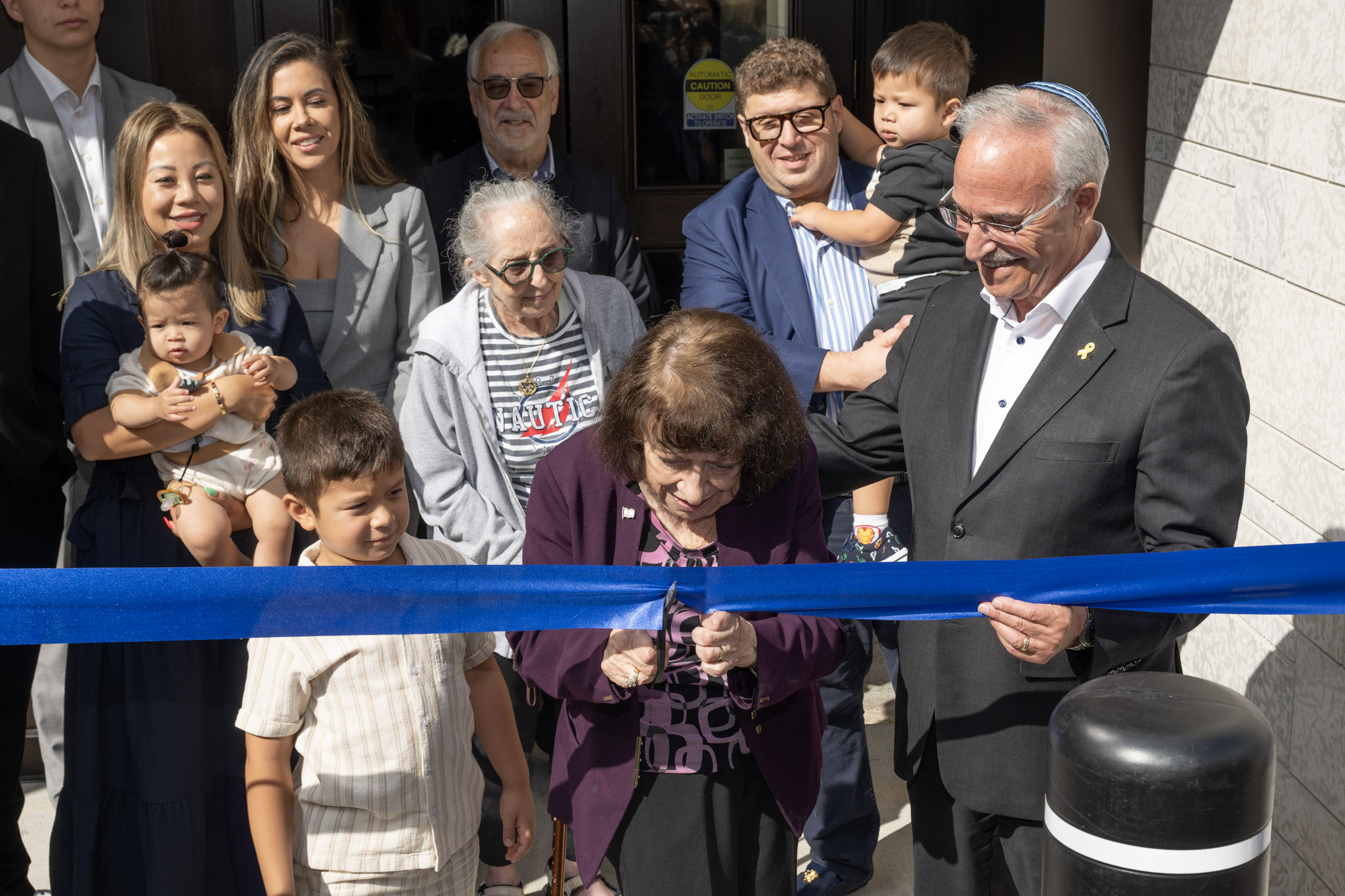Local News
Some thoughts on the passing of Jim Carr
By BERNIE BELLAN I first met Jim Carr when I decided to take an evening course Jim was teaching about politics at the University of Winnipeg in the 1970s. He was already well known to many Winnipeggers from his occasional appearances on the local CBC news program “24 Hours,” where, although still only in his twenties, he was able to offer informed insight about politics.
Jim was only two years older than me, but he was so much wiser. A scan of the many tributes that have poured forth since his death on December 12 was announced reveal – if you weren’t already aware, how incredibly diversified his interests were.
But, since this is a Jewish newspaper I’ve decided to focus on aspects of Jim’s life as they relate to his own Jewish identity. Yes, it’s true that even though Jim did not go out of his way to draw attention to the fact he was Jewish, he was still immensely proud of his heritage.
At the beginning of his contribution to the Jewish Foundation’s Book of Life in which he writes about his Jewish background, Jim notes, in a way that would probably sound so familiar to so many of us, that “My grandparents all arrived in Canada in the early 1900s. They came from Europe with no money and no English; they came with nothing but hope, optimism, and the desire to work hard to make a life for their families in this young country.
“Those early seeds of risk and hard work have taken root as the Carr and Golden families have flourished in this great land. It’s a story that can be told thousands of times for thousands of families who saw Canada as an oasis of calm and opportunity in troubled times. I’m very aware, and proud, that to this day people from around the world continue to come to Canada. Together, we weave an elegant, multicultural tapestry that is the envy of the world.
Jim didn’t attend Jewish school, although in conversing with him he often liked to drop Yiddish expressions. He also mentions that his mother belonged to “Hadassah,” while his father belonged to the “Montefiore Club,” which was really just a venue for Jewish men to play cards.
Typically for young south end boys growing up in the 1960s, Jim wrote that “I was involved in some Jewish youth activities and enjoyed my time as a member of Toppers in BBYO. I had my Bar Mitzvah at Shaarey Zedek where I shared the pulpit with another young man, Howard Gurevich.”
Jim goes on to describe his schooling and some of the organizations with which he was associated to that point in his life. (He was still with the Business Council of Manitoba until 2015, which is when he reentered politics, this time becoming the MP for Winnipeg South Centre.)
“I attended school at Brock Corydon, Montrose, Grant Park, University of Winnipeg Collegiate, the University of British Columbia, and McGill University. I have enjoyed—and still do—a diverse career. I have always been drawn to pursuits, both volunteer and professional, that have the potential to improve life in my city, my province, and my country. I played oboe with the Winnipeg Symphony Orchestra; served on the editorial board of the Winnipeg Free Press; have held senior administrative positions with the Manitoba Arts Council and the University of Winnipeg; and I served my community for four years as a Member of the Legislative Assembly and as deputy leader of the opposition. Today, I am proud to be the President and CEO of the Business Council of Manitoba…”
It was shortly after having written that when Jim entered into the final chapter of his political career – in 2015, when he was first elected as the Liberal Member of Parliament for Winnipeg South Centre – a position he held until his death last week.
A scan of our own Jewish Post archives reveals that Jim’s name didn’t enter on to our own pages until 1996, when we reported on a panel discussion held on February 28 that year which was sponsored by the Canadian Friends of the Hebrew University, the topic of which was prospects for peace in the Middle East.
Jim had just recently returned from a trip to Israel (his first time there), where he had gone to report on the Palestinian election for the Winnipeg Free Press. (With Jim on that trip also was the late Sol Kanee.)
That article also gave a foresight of the optimism that Jim continued to hold the rest of his life that Israeli Jews and Palestinians could work together, when he said that “Israelis and Palestinians now are talking about ‘taking walls down, not erecting new ones’ ”(in response to a series of terrorist bombings in Jerusalem that had been occurring), “and a proposal to divide the two peoples is a ‘non-starter.’ ”
In our June 27, 2001 issue we reported on yet another panel discussion on peace in the Middle East – again sponsored by Canadian Friends of the Hebrew University (Wouldn’t it be nice to have that organization contributing once again to the intellectual life of our community the way it used to?)
And, who was the chair of that panel discussion? You guessed it: Jim Carr.
Continuing in that vein, for years Jim was an active member of the Arab Jewish Dialogue, which was founded in 2006 by Ab Freig and the late Harold Buchwald as a means by which members of Winnipeg’s Jewish and Arab communities could engage in meaningful discussion.
Through the years whenever I spoke with Jim about the prospects for peace between Israelis and Palestinians, he held to his belief that peace could be achieved, but only through a return by Israel to the pre-1967 borders and the recognition by Palestinians of Israel’s right to live within secure borders.
Was he naïve to continue holding to a view that has undoubtedly been rendered almost totally irrelevant as a result of Israeli settlements on the West Bank and the apparent utter refusal of most Palestinians to abandon the notion that violence against Israelis is justified? Perhaps, but Jim was a small-l liberal through and through.
The last time I had a chance to sit down with Jim and have a really meaningful chat was in September 2018 when he had just returned from another trip to Israel, this time as Canada’s Minister of International Trade Diversification. Jim was very proud of the growth in trade that had been occurring between Israel and Canada, especially since the signing of a free trade treaty between the two countries in 1997 (and which was modernized in 2014).
Yet, I wondered whether Jim’s almost dogged insistence on even-handedness might be something for which he could be criticized by Jewish groups for not doing more to represent “Jewish” interests? I pointed out, for instance, that in speaking with Dimitri Lascaris, who has long been a fierce critic of Israel, when I mentioned to Lascaris that Jim Carr was, in fact, Jewish, Lascaris said he wasn’t aware of that. I said to Jim that was indicative of how even-handed he was perceived by other politicians.
I wondered though how Jim felt about being a “Jewish” member of Cabinet?
He responded: “I can only speak for myself. I am not in Cabinet to represent Jewish interests to the Government of Canada, but I’m Jewish, so I bring with me my sensitivities, my sensibilities, who I am as a person – and who I am as a person is very much a product of how I was raised in the community in which I was raised and with which I still feel a very close association as early as today – when I was in synagogue.” (That interview took place the second day of Rosh Hashanah.)
That was quintessential Jim Carr – a thoroughly thought out and articulate sentence that reads as well on the written page as it sounded when he spoke those words to me.
At the same time I should mention that Jim was also actively engaged in a dialogue with Muslim members of the Federal Liberal caucus, along with fellow Jewish members of the Liberal caucus. That was Jim: always wanting to keep the discussion going – maybe not to achieve any specific goals, but simply for the sake of keeping lines of communication open.
In closing, I want to note that the last time I saw Jim was this past summer when he was at a meet and greet event in Lindenwoods. There weren’t many people there; I was a little surprised because it was a beautiful summer day and I thought more people would have turned out to see Jim. As it was, when I went up to say hi, Jim flashed that trademark smile and told me that he always enjoys reading The Jewish Post & News. I told him that in many ways he had been a role model for me – as a champion of a style of thoughtful liberalism that is often under attack. But he looked very tired and I saw that just coming out to that event, even though he was sitting down, must have been quite an effort for him.
I will miss Jim Carr, as a friend, as a devoted member of the Manitoba community, and as a Jew who represented values that were engrained in those of us who grew up in the 1950s and 60s when it was fashionable to believe that public service was a noble aspiration. I’m not sure there are any others like Jim Carr still around in our community.
Jim Carr’s body was laid to rest at Shaarey Zedek Cemetery on Wednesday, December 14 in a private graveside service.
Local News
Thank you to the community from the Chesed Shel Emes

We’re delighted to share a major milestone in our Capital Campaign, “Building on our Tradition.” Launched in November 2018, this campaign aimed to replace our outdated facility with a modern space tailored to our unique needs. Our new building is designed with ritual at its core, featuring ample preparation space, Shomer space, and storage, creating a warm and welcoming environment for our community during times of need.
We’re grateful to the nearly 1,000 generous donors who contributed over $4 million towards our new facility. A $750,000 mortgage will be retired in November 2025, completing this monumental project in just seven years.
We’re also thrilled to announce that our Chesed Shel Emes Endowment Fund has grown tenfold, from $15,000 to $150,000, thanks to you, the Jewish Foundation of Manitoba’s FundMatch program, and Million Dollar Match initiative in 2024. Our fund helps ensure that everyone can have a dignified Jewish funeral regardless of financial need.
As we look to the future, our goal remains to ensure the Chevra Kadisha continues to serve our community for generations to come. Our focus now shifts to replenishing our savings account and growing our JFM Endowment fund.
We’re deeply grateful for your support over the past several years.
It’s our privilege to serve our community with care and compassion.
With sincere appreciation,
Campaign cabinet: Hillel Kravetsky, Gerry Pritchard, Stuart Pudavick,
Jack Solomon, and Rena Boroditsky
Murray S. Greenfield, President
Local News
Winnipeg Beach Synagogue about to celebrate 75th anniversary

By BERNIE BELLAN (July 13) In 1950 a group of cottage owners at Winnipeg Beach took it upon themselves to relocate a one-room schoolhouse that was in the Beausejour area to Winnipeg Beach where it became the beach synagogue at the corner of Hazel and Grove.
There it stayed until 1998 when it was moved to its current location at Camp Massad.
On August 2nd members of the synagogue will be holding a 75th anniversary celebration.

As part of the celebration anyone who is a descendant or relative of any of the original members of the first executive committee (as seen in the photo here) is invited to attend the synagogue that morning.
If you are a relative please contact Abe Borzykowski at wpgbeachshule@shaw.ca or aborzykowski@shaw.ca to let Abe know you might be attending or for more information about the 75th anniversary celebration.
We will soon be publishing a story about the history of the beach synagogue, which is something I’ve been writing about for over 25 years.
Local News
Vickar Family cuts ribbon on new Tova Vickar and Family Childcare Centre

By MYRON LOVE In the words of Larry Vickar, the Shaarey Zedek’s successful Dor V’ Dor Campaign “is not only a renewal of the synagogue but truly a renewal movement of Jewish life in our community.”An integral part of that renewal movement was the creation of a daycare centre within the expanded synagogue. On Monday, June 23, Larry and Tova Vickar cut the ribbon, thereby officially opening the Tova Vickar and Family Childcare Centre in the presence of 100 of their family members, friends and other supporters of the project.
The short program preceding the morning ribbon-cutting began with a continental breakfast followed by a welcome by both Fanny Levy, Shaarey Zedek’s Board President, and Executive Director Dr. Rena Secter Elbaze. In Elbaze’s remarks, she noted that Larry and Tova wanted their family (including son Stephen and family, who flew in from Florida) and friends at the event to celebrate the opening of the Tova Vickar and Family Childcare Centre, “not because of the accolades, but because, as Larry put it, he hopes that their investment in the congregation will inspire others to do the same.”
“When Larry and I spoke about what this gift meant to him and the message he wanted people to take away,” she continued, “I couldn’t help but connect it to the teachings of Reb Zalman Schachter-Shalomi whose book – Age-ing to Sage-ing – changes the whole way we look at the concept of ageing and basing it on our ancestral teachings.”
She explained that his concept of “Sage-ing” is based on three key ideas – Discover your meaning and purpose; accept our mortality and think about the legacy you want to leave.
“Larry spoke about these exact concepts when we met,” she said.
Elbaze also noted the presence of Shaarey Zedek’s newly-arrived senior Rabbi Carnie Rose, former Rabbi Alan Green, and area MLAs Mike Moroz and Carla Compton.
Larry Vickar expressed his great appreciation for all those in attendance. “Tova and I are deeply moved to stand here with you today for this important milestone in our community”, he said. “We are grateful to be surrounded by all of you, the people we care about, our family and friends… you who have touched our lives and played some part in our journey.”
